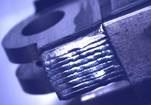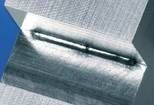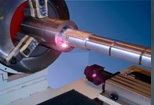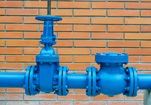Products
During the laser deposit welding process, also known as laser cladding, a filler material such as wire or powder and the basic material are melted by laser radiation and metallurgically bonded.
Laser deposit welding with filler wire allows repairs to be made, wear resistance can be improved, small design modifications can be realized and manufacturing faults can be corrected. All this can be done with excellent quality and flexibility which can only be achieved by laser technology. The laser beam makes a precise and high-strength connection between the manually added filler wire and the workpiece. Application areas with wire diameters of 0.1 mm to 0.8 mm can be realized. The low heat input, rapid heating and cooling, and precise control of laser beam energy by pulse forming all help to minimize thermal loading of the workpiece. Compared to other methods, the microstructural transformation in the workpiece is clearly lower.
Laser deposit welding with filler wire allows repairs to be made, wear resistance can be improved, small design modifications can be realized and manufacturing faults can be corrected. All this can be done with excellent quality and flexibility which can only be achieved by laser technology. The laser beam makes a precise and high-strength connection between the manually added filler wire and the workpiece. Application areas with wire diameters of 0.1 mm to 0.8 mm can be realized. The low heat input, rapid heating and cooling, and precise control of laser beam energy by pulse forming all help to minimize thermal loading of the workpiece. Compared to other methods, the microstructural transformation in the workpiece is clearly lower.



ID Cladding nozzles have a corrosion-resistant layer, which also protects the workpiece against high temperatures and chemicals. This application can frequently be found in the chemical industry, automotive production and in the oil and gas industries.

Valves and turbine blades are exposed to high mechanical strain due to constant motion and vibration. By applying the powder using a laser beam, the components become much more resistant to wear and are also protected against aggressive fluids and high temperatures. Powder deposit welding is also well-suited for repairing turbine blades and valves.

Minimal component distortion and high flexibility are criteria that are crucial in the aviation and aerospace industry, but are also becoming increasingly important for the automotive industry. Due to the reduced heat input and the usage of additive material, hot cracks and porosity phenomena can be avoided. For this reason, high precision laser deposit welding plays a major role in repair and production, both for parts with large surface areas and for more precise tasks.
Contact us +91 7575806266 Email : sales@vesindia.org, bhavesh.pethani@gmail.com
| Home | Business Profile | Products | Blog | News | SiteMap | Contact Us | About Us